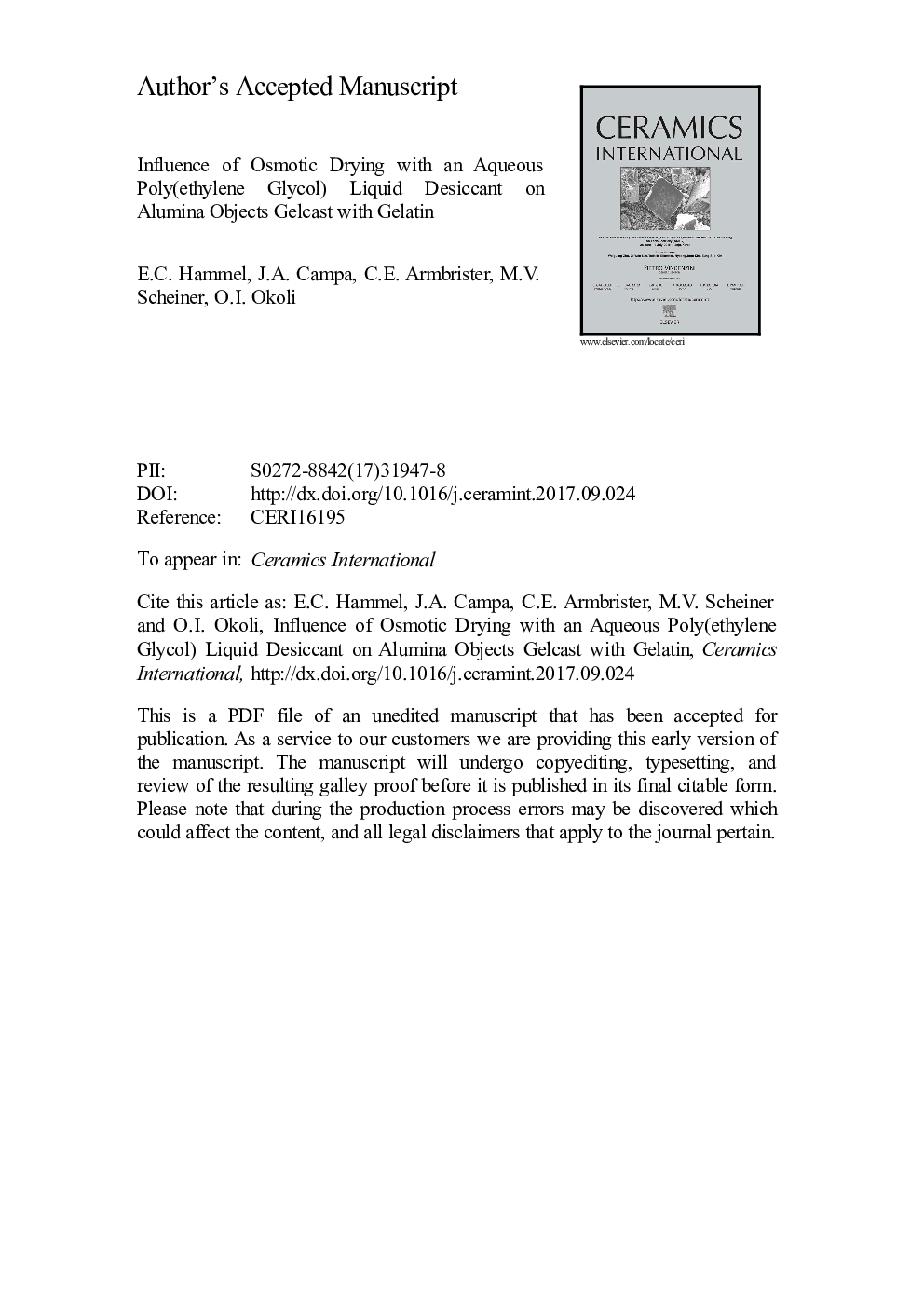| Article ID | Journal | Published Year | Pages | File Type |
|---|---|---|---|---|
| 5437282 | Ceramics International | 2017 | 29 Pages |
Abstract
Gelcasting and liquid desiccant drying are novel forming and drying methods used to mitigate common issues associated with the fabrication of complex advanced ceramic objects. In this study, the molecular weight and osmotic pressure of aqueous poly(ethylene glycol) (PEG) desiccant solutions were simultaneously varied to understand their influence on the net mass loss rates of gelcast alumina samples prepared using gelatin as a gelling agent. Additionally, the amount of PEG diffusion and water diffusion to and from the ceramic samples after 150Â min of immersion in the liquid desiccant was correlated to the solution properties as was the final bulk density of the sintered samples. Solutions with high molecular weight and low osmotic pressure resulted in low PEG gain and low water loss, while solutions with low molecular weight and high osmotic pressure resulted in high PEG gain and high water loss. In some cases, more than 40Â wt% of the total water per sample was removed through the liquid desiccant drying process.
Keywords
Related Topics
Physical Sciences and Engineering
Materials Science
Ceramics and Composites
Authors
E.C. Hammel, J.A. Campa, C.E. Armbrister, M.V. Scheiner, O.I. Okoli,
